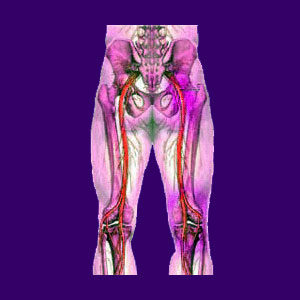
Many back pain sufferers are diagnosed with different leg lengths, especially if their primary caregiver is a chiropractor. There are 2 varieties of leg length conditions, also known as short leg syndrome or a leg length discrepancy condition. The first type of length variation is when the patient actually has a skeletal abnormality which causes one (or more) leg bone(s) to be shorter than the other. In other cases, an irregularity can exist in one of the leg joints, causing a shorter leg. This condition is known as structural or anatomical short leg.
However, the scope of this article will focus on the other form of leg length condition known as non-structural or functional short leg. This is a far more subjective and sometimes invalid diagnostic theory. We will focus on the inconsistencies in logic in this diagnostic conclusion and warn patients about the risks of becoming slaves to ineffectual therapy for what might just be a complete non-issue.
Functionally Different Leg Lengths
In a functional short leg syndrome, the actual bones will be identical or near identical left to right. There are no anatomical reasons for the leg length discrepancy, but it may exist nonetheless. In a few patients, there may be soft tissue abnormalities or injuries which are responsible for creating a functional short leg, most often in the hip joint or pelvis.
In virtually all other cases, functional short leg is a transitory condition which may come and go as a normal part of a person’s anatomical balance through life. In essence, there is no specific reason for the condition to exist, no inherent danger of its existence and no inherent pain or other symptoms which accompany it.
Leg Length Differential
Taking structural leg length issues and soft tissue injuries responsible for chronic leg length issues out of the equation, we are left with about 95% of the diagnosed patients. A few may be in care with an osteopathic medical provider, but the vast majority have been diagnosed by a chiropractor. Chiropractors love to point out leg length discrepancies: “Oh, your left leg is an inch shorter. That explains your pain.” No, that explains nothing.
Statistics clearly show that yes, most back pain sufferers do have transient leg length issues, but so do most of the general population, regardless of demonstrating any back pain or not. The anatomy is rarely perfectly balanced and can adapt quite well to minor variations in length and size without pain. This fact is well known to physicians and a variety of other healthcare professionals and is one of the main reasons why chiropractic has such as difficult time gaining universal acceptance in the medical community.
In essence, trying to find perfect symmetry in the human form is virtually impossible. Just ask any aesthetic surgeon.
In a functional short leg syndrome, the actual bones will be identical or near identical left to right. There are no anatomical reasons for the leg length discrepancy, but it may exist nonetheless. In a few patients, there may be soft tissue abnormalities or injuries which are responsible for creating a functional short leg, most often in the hip joint or pelvis.
In virtually all other cases, functional short leg is a transitory condition which may come and go as a normal part of a person’s anatomical balance through life. In essence, there is no specific reason for the condition to exist, no inherent danger of its existence and no inherent pain or other symptoms which accompany it.
Different Leg Lengths Information
Taking structural leg length issues and soft tissue injuries responsible for chronic leg length issues out of the equation, we are left with about 95% of the diagnosed patients. A few may be in care with an osteopathic medical provider, but the vast majority have been diagnosed by a chiropractor. Chiropractors love to point out leg length discrepancies: “Oh, your left leg is an inch shorter. That explains your pain.” No, that explains nothing.
Statistics clearly show that yes, most back pain sufferers do have transient leg length issues, but so do most of the general population, regardless of demonstrating any back pain or not. The anatomy is rarely perfectly balanced and can adapt quite well to minor variations in length and size without pain. This fact is well known to physicians and a variety of other healthcare professionals and is one of the main reasons why chiropractic has such as difficult time gaining universal acceptance in the medical community.
In essence, trying to find perfect symmetry in the human form is virtually impossible. Just ask any aesthetic surgeon.
Treating Leg Length Issues
For chiropractors, the solution to a short leg is simple. Use the cookie-cutter spinal adjustment approach, the same as used for treating back pain or virtually any other health issue. Funny, about 5 minutes after the adjustment (if that long), the leg will be right back where it started. Maybe even short on the other side this time. However, this justifies the chiropractor requesting for the patient to return many more times, since the adjustment is not holding. The point is that leg length, when viewed from a chiropractic viewpoint, can be a highly subjective observation which changes minute to minute.
I used think there was some validity to the leg length theory used by all my chiros until I did some research. I highly recommend that any back pain patient who has been diagnosed or treated according to this theory do the same. Learn the facts and see if any of it makes sense to you.
I am sure your chiropractor will defend their practice until the day they die, citing postural issues, pelvis out of alignment, tilted pelvis, muscle imbalances and other such typical verdicts. Let them rant and rave. Just do yourself a favor and read up on this practice before you buy into it 100%. Better yet, why not talk to your physician for their take on it.





